When the Hart-Scott-Rodino Antitrust Improvements Act (the “HSR Act”) was signed into law on September 30, 1976, it sought to preemptively prevent the formation of monopolies by requiring parties to certain categories of transactions to make pre-merger filings with the Federal Trade Commission (“FTC”) and the antitrust enforcement division of the Department of Justice (“DOJ”). On October 10th, 2024, FTC announced the first major revision (the “Final Rule”) to the pre-merger filing framework since its inception. The Final Rule, which is supported by DOJ, seeks to eliminate certain “information gaps” by significantly expanding the scope of disclosure requirements for most transactions subject to HSR Act review. However, the Final Rule will not alter the framework for determining whether a transaction must submit a pre-merger HSR Act filing, and many transactions will continue to avoid HSR Act review, either by qualifying for an applicable exemption or by failing to meet one of the various applicability requirements such as the “Commerce Test,” the “Size of Transaction Test,” or the “Size of Person Test.” The Final Rule is expected to become effective in January 2025. Some of the most significant changes to the pre-merger filing process are outlined below.
Significant Changes to the HSR Act Filing Process
Through its enactment of the Final Rule, FTC has created three categories of transactions reportable under the HSR Act: (A) “Select 801.30 Transactions,” (B) transactions with no competitive overlap and/or no supply relationship, and (C) transactions with competitive overlap and/or a supply relationship. Each type of transaction will have different filing requirements commensurate with the likelihood that the transaction may violate antitrust laws.
(A) Select 801.30 Transactions
FTC has recognized a subset of transactions known as “Select 801.30 Transactions,” which it describes as transactions “that do not result in the acquisition of control … and where there is no agreement or contemplated agreement between any entity within the acquiring and acquired person.” Transactions that fall into this category may include open-market transactions, tender offers and certain securities purchased pursuant to an executive compensation agreement. While they do not meet an applicable filing exemption under the HSR Act, FTC has recognized that 801.30 Transactions pose a very low risk to fair competition and are unlikely to violate antitrust laws because they do not involve a traditionally negotiated transaction. As such, the Final rule exempts parties to 801.30 Transactions from many of the more onerous disclosure requirements applicable to negotiated transactions.
(B) Transactions without Competitive Overlap or Supply Relationship
-
- Description of Existing or Planned Competitive Overlaps and/or Supplier Relationships; Transaction Rationale. As a gating matter, each party to a transaction must describe its current and planned products (including by North American Industry Classification System (NAICS) code), services, and any vertical supply or other contractual relationship that may exist with the other party. Notably, the Final Rule requires that each party to a proposed transaction report this information independently rather than in a coordinated fashion as was previously permitted. Furthermore, parties are required to describe their strategic rationale(s) for undertaking the transaction and provide supporting documentation that confirms or discusses the stated rationale(s). This information will allow FTC to identify whether the proposed transaction is between parties with a competitive overlap and/or supply relationship and subject to additional scrutiny and disclosure requirements as described below.
- Expanded Ownership & Control Information. The Final Rule requires significantly more disclosure regarding the corporate structure of the parties to a proposed transaction, including each transacting party’s direct and indirect parent and subsidiary entities. The acquiring entity must also disclose persons with minority equity interests (5-49%) or limited partners with certain management rights in the acquiring entity. The acquiring party must also disclose its current officers and directors and those proposed to serve the consolidated entity following the consummation of the transaction.
- Ownership and Transaction Diagrams. The acquiring person must submit diagrams describing both the ownership structure of the acquiring entity as well as the proposed transaction if such diagrams already exist or have been created for purposes of describing the transaction to stakeholders.
- Transaction Documents. Prior to adoption of the Final Rule, parties to a transaction were permitted to submit preliminary term sheets or general letters of intent describing the proposed transaction at a somewhat high level. Under the Final Rule, parties will be required to submit all signed definitive documents to the transaction; provided, that if definitive documents have not been executed at the time of filing, parties must submit either the most recent drafts of the definitive documents or a term sheet that provides “sufficient detail” describing the full scope of the transaction. FTC clarified that in order to provide “sufficient detail,” preliminary documents must describe “some combination of the following terms: the identity of the parties; the structure of the transaction; the scope of what is being acquired; calculation of the purchase price; an estimated closing timeline; employee retention policies, including with respect to key personnel; post-closing governance; and transaction expenses or other material terms.”
(C) Transactions with Competitive Overlap or Supply Relationship
In addition to the filing requirements described above, proposed transactions between parties with a competitive overlap or supply relationship are subject to additional scrutiny and therefore have additional disclosure requirements, including the following:
-
- Competitive Overlap or Supply Relationship Description. If parties to a proposed transaction report a competitive overlap in products or services (see (B)(i) above), the Final Rule requires that, for each category of overlapping products or services, the parties must (a) describe the categories of customers, (b) disclose their top 10 customers in each customer category, and (c) current or projected sales revenue, volume, or other applicable metric used to measure performance. Likewise, if the parties disclose an existing vertical relationship (where either party is a supplier or customer of the other party), the parties must disclose the product(s) or service(s) exchanged in the relationship as well as the top 10 competitors for the product or service at issue.
- Geographic Market Information. If overlapping products and services fall within certain categories, the Final Rule will require parties to include geographic information about their current and planned operations, including the street addresses or franchise locations where each party generates revenue from such products and services. This information is intended to permit FTC to analyze how a transaction may affect competition in select geographic markets, including at the consumer’s local level.
- Prior Acquisitions. Under the Final Rule, both parties to a proposed transaction with competitive overlap must describe their 5-year acquisition history within common line(s) of business. This requirement is particularly significant for private equity firms and other strategic buy-side parties whose growth strategies often involve “add-on” or “roll-up” structures.
- Plans or Reports to CEO / Board of Directors. The Final Rule requires that each party to a proposed transaction with competitive overlap must submit all plans and reports (even those prepared in the ordinary course and not in preparation for the proposed transaction) provided to the CEO or Board of Directors within the preceding year that describe a party’s market share or the competitive landscape in an overlapping industry. As such, any materials prepared for a company’s CEO or Board of Directors that analyze the competitive landscape for the company’s products or services should be prepared with an eye towards their possible disclosure to regulatory authorities.
In connection with the Final Rule, FTC published the following table summarizing the disclosure requirements for each party (where “A-Side” corresponds to the acquiring entity and “B-Side” corresponds to the target entity) for each category of transaction:
| Select 801.30 Transactions | No Overlap / No Supply Relationship Transaction | Overlap / Supply Relationship Transaction | ||||
| A-Side | B-Side | A-Side | B-Side | A-Side | B-Side | |
| Translations | ||||||
| Changes to Identification of Additional Minority Interest Holders | ||||||
| Organization of Controlled Entities | x | x | ||||
| Description of Ownership Structure | x | x | x | |||
| Organizational Chart (if exists) | x | x | x | |||
| Identification of Certain Officers and Directors | x | x | x | |||
| Description of Business of the Acquiring Person | x | x | x | |||
| Transactions Subject to International Antitrust Notification | x | x | x | |||
| Transaction Rationale | x | x | ||||
| Transaction Diagram (if one exists) | x | x | x | x | ||
| Competition Documents from Supervisory Deal Team Lead | x | |||||
| Plans and Reports | x | x | x | x | ||
| Transaction Agreements | x | x | ||||
| Other Agreements Between the Parties | x | x | x | |||
| Overlap Description | x | x | ||||
| Supply Relationships Description | x | x | x | x | ||
| Geographic Market Information (new organization, street-level reporting, and reporting of franchisees) | x | x | ||||
| Limiting Minority-Held Entity Identification to Overlaps | x | x | ||||
| Prior Acquisitions | x | x | ||||
| Subsidies from Foreign Entities or Governments of Concern | ||||||
| Defense or Intelligence Contracts | x | x | x | x | ||
When it becomes effective in January 2025, the Final Rule will have a significant and immediate impact on pre-merger filings under the HSR Act. Companies contemplating a strategic transaction that would be subject to HSR Act review should prepare for a much different process by allocating additional time and resources into preparing their pre-merger filing. In house practitioners, should also keep in mind that documents presented to leadership concerning the competitive landscape of their industry may be required to be submitted to regulators in connection with a strategic transaction subject to the HSR Act.






